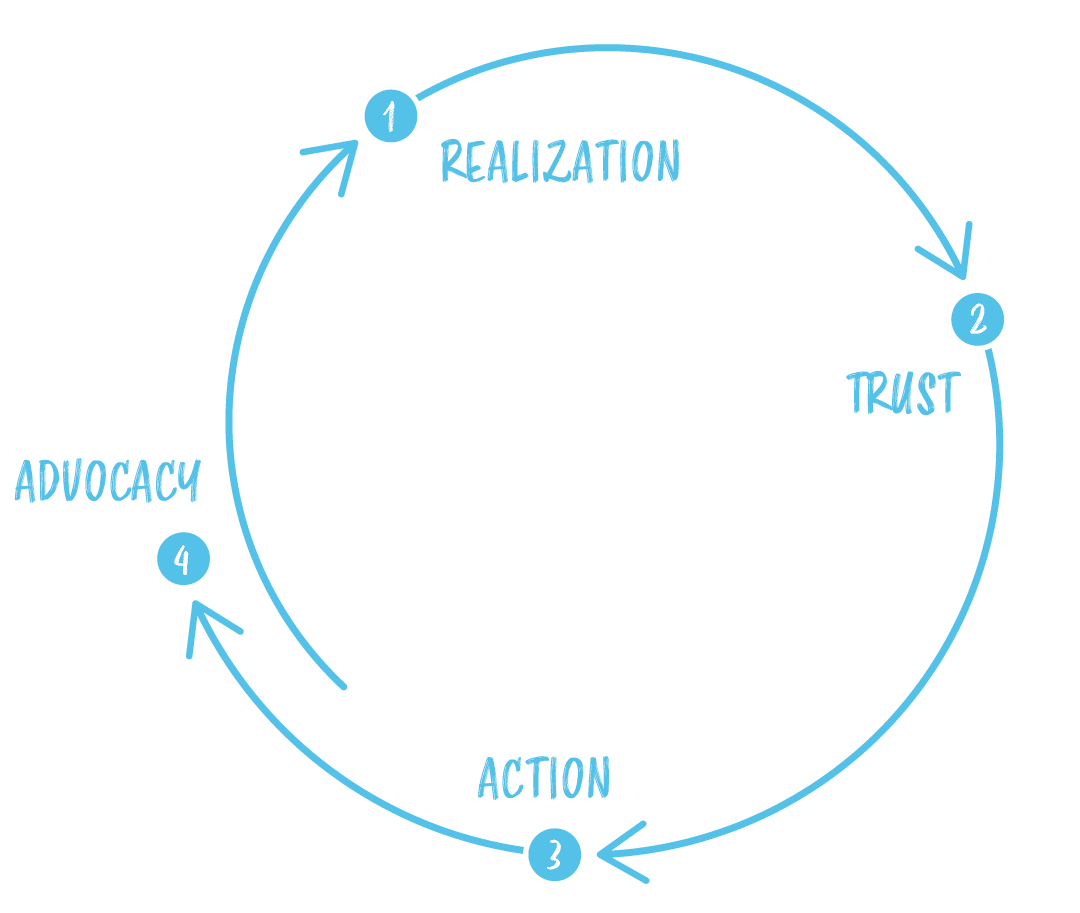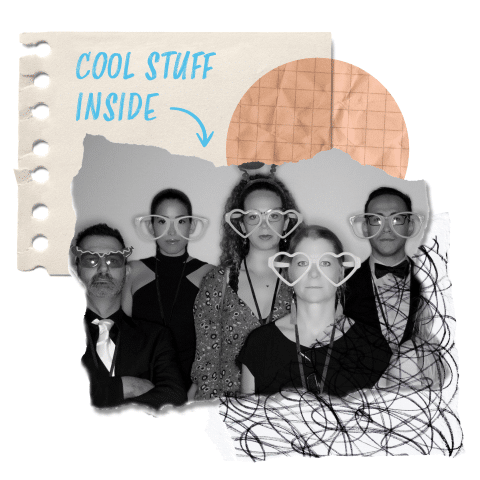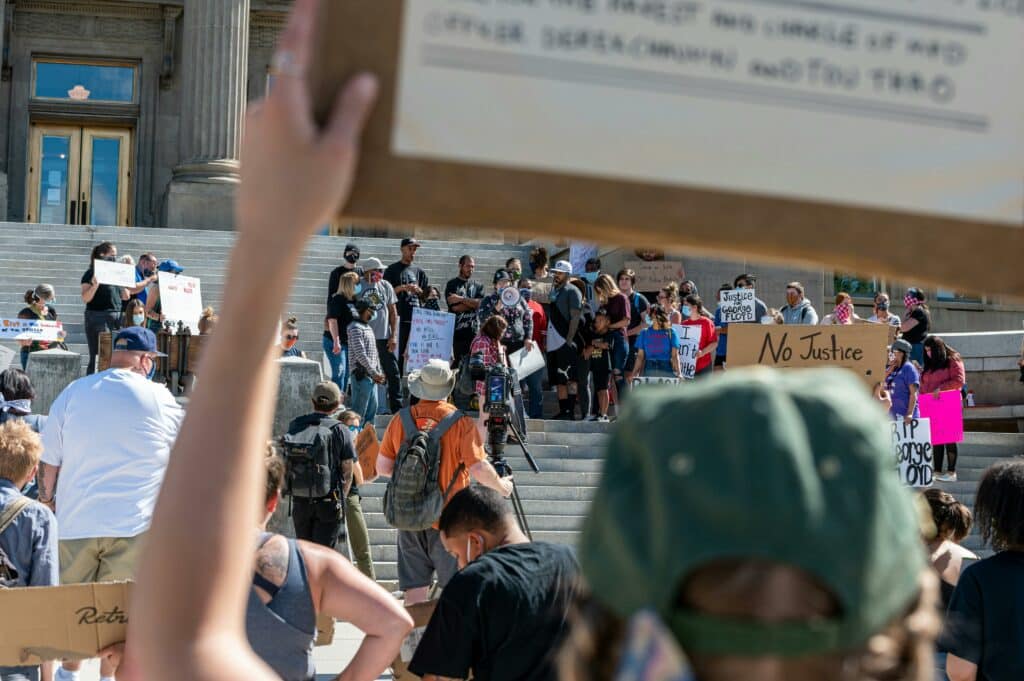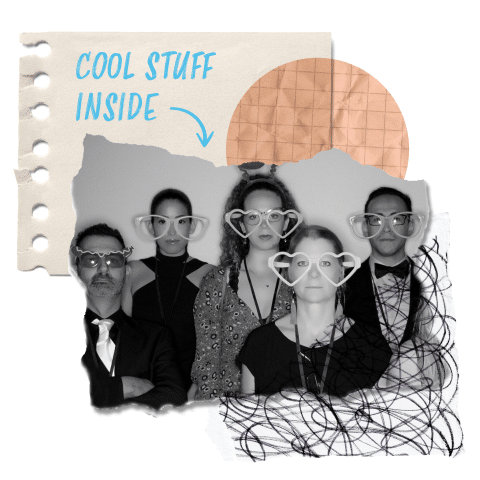WHY WE’RE HERE
Transactional by nature and designed to sell, traditional marketing funnels fall short when it comes to communications for long-term social change.
If we’re going to use communications to make real change – you know, the kind that long outlasts us – we need a different, more humanized approach; one with more heart and less sales-qualified leads.
The Momentum Model is Mixte’s proprietary framework to drive social change with communications.
Informed by more than ten years of social justice communications and the brainpower of a diverse team, this model is intentionally designed for social justice visionaries who want communications to support their work on the ground.
The phases of this framework, from realization and trust to action and advocacy, have been intentionally designed to reflect how each person we speak to, regardless of where they begin their personal journey or which issue they’re drawn to, experiences becoming a changemaker. This framework hinges on our ability to build long-lasting, trusting relationships with people – a concept that’s essential to not only communications, but every piece of building the world we want to live in.
We hope this approach not only helps communications teams everywhere, and perhaps more importantly, inspires us all with an approach to cause-driven communications that’s as heartfelt and human as we are.
A New Framework

UNDERSTANDING THE MOMENTUM MODEL
PHASE 1: REALIZATION
Intentional recognition of an issue, impact or injustice
- This stage is the very beginning of a person’s journey with a movement, in which they realize something isn’t right
- This realization can be sparked from a variety of places: A personal experience with injustice, people you already know, things you notice in your own community, world events, even social media
- Often, a person in this stage wants to do something, but doesn’t know what’s already being done or where to start
Example 1:
A Texas high school student, let’s call them Lyn, is talking to their sister, who confides in them that she is unexpectedly pregnant. Lyn’s sister doesn’t know what to do because abortion is criminalized where they live, and she could go to jail if she has one. Lyn feels anger and helplessness that their sister is trapped by law into giving birth when she isn’t ready to be a mother, and begins to Google abortion funds in Texas. She follows your reproductive justice organization on TikTok.
Example 2:
Two parents are talking at their mailboxes about neighborhood safety for their kids. One of the parents, let’s call him Jamal, is especially worried about his Black son walking to and from school alone given the increase in anti-Black violence. The other parent mentions that he attends monthly meetings with an organization working on raising awareness about racial injustice in the community. Jamal decides to attend the next meeting with his friend.
Realization channels most often include:
Paid social media ambassadors, paid advertising, news articles, op-eds, letters to the editor, SEO, podcasts, radio, word of mouth, partnerships, community events
PHASE 2: TRUST
Demonstrating alignment between values and actions to build transparent relationships
- Once someone has been introduced to the issue and discovers your organization, the next step is to build trust
- Building trust, especially around issues that have real impacts on people’s lives, takes time, transparency and consistency. This won’t happen overnight. In fact, this may be the part of their journey that takes the longest – and that’s perfectly okay
- In this stage, ensure your audience knows your values and can easily see the action you take on your values
- If your organization is seen as performative or lacking transparency, your people will abandon you at this stage. Once you establish a trusting relationship, everything else will flourish
Example 1:
After a few weeks of watching your TikTok videos, Lyn begins to learn more about what abortion funds do and the recent struggles for reproductive justice where she lives. She shares your videos with her sister, which provide them both with a sense of hope that there are people in their community standing up for reproductive freedom. They both follow you on the rest of your social media channels and sign up to get text messages to alert them when there are opportunities to get more involved.
Example 2:
Jamal and his neighbor attend the community meeting on racial justice. He is prompted to sign in as an attendee and asked if he would like to join the email list to get updates from the organization convening them. He would, so he shares his email, eager to stay in the loop with opportunities to do something about the issues that impact him, his family and his community.
Trust channels most often include:
Word of mouth, partnerships, website, blog, social media, paid social media ambassadors, email, events, phone calls
PHASE 3: ACTION
Engaging in a new way to demonstrate support
- Asking for someone to take action before they’ve established a connection to what you do and why, and before they’ve learned that you are trustworthy, is like asking someone to buy a house without seeing it first. You can’t (well you can, but how well will that go, really?). You have to give time for the relationship to develop. Only then will the action be authentic and not feel transactional.
- Actions may look like asking your people to make a donation, become a member, join an event, become a volunteer, collaborate/partner, call or send a letter to their representatives, sign a petition, or something else entirely.
Example 1:
One day, Lyn and their sister get a text message from your organization. It’s a succinct message asking for signatures on a letter to the Texas Governor in response to recent anti-abortion legislation. They click the link and add their names to the pre-drafted letter, which is followed by an invitation to join your march next week. Neither of them have ever been to a march before, but your organization has already prepared everything they need to know. The siblings show up to the starting point in all white, like your instructions suggested, and feel overwhelmed by how many other people are there in white also, feeling less alone in this very personal fight.
Example 2:
Since the meeting a few weeks ago, Jamal has been getting emails from your organization that keep him informed of community progress and upcoming opportunities. When he gets a message inviting residents to a City Council meeting where they’ll hear public comment on banning chokeholds in the local police department. On the day of, he meets others from your organization outside and you walk in together, prepared to deliver testimony that urges Councilmembers to reject negligent police responses that cause significant, long-term harm.
Action channels most often include:
Text message marketing, email, donation page, peer-to-peer fundraising, events, website, letter writing platform, surveys, phone calls
PHASE 4: ADVOCACY
Nurturing new and existing relationships with community, building ambassadors who believe in the possibility to create change
- Your audience has recognized an issue or impact, come to trust your organization and taken action to get involved. At this point, we would consider them to be advocates – for your brand and your movement
- This very precious group of people is one of the greatest tools your organization has to grow your impact and reach more people
- These folks are your biggest advocates, inspiring new people to join and starting the cycle again for everyone they talk to. Cherish them!
Examples:
- After a moving experience signing the letter and attending the march, Lyn realizes that, even though there are many more steps required to change policy, taking action feels good. They tell their friends at school about the march and why it’s important to show up for the things that impact them. They convince a few of their friends to follow your organization on TikTok too, and a few months later, Lyn manages to bring a few of them to another local march.
- After Jamal’s experience at City Council, he decides he wants to get even more involved in advocating for better policies in his neighborhood. He continues to attend community meetings and becomes one of your most engaged community advocates, organizing his neighbors and friends to join him. After a while, Jamal joins the Board of Directors and plays an even more pivotal role in driving the efforts and impact of your organization.
Advocacy channels most often include:
Email, phone call, snail mail, video, events, social media, word of mouth
Now What?
Let’s get to work creating your organization’s Momentum Model !






